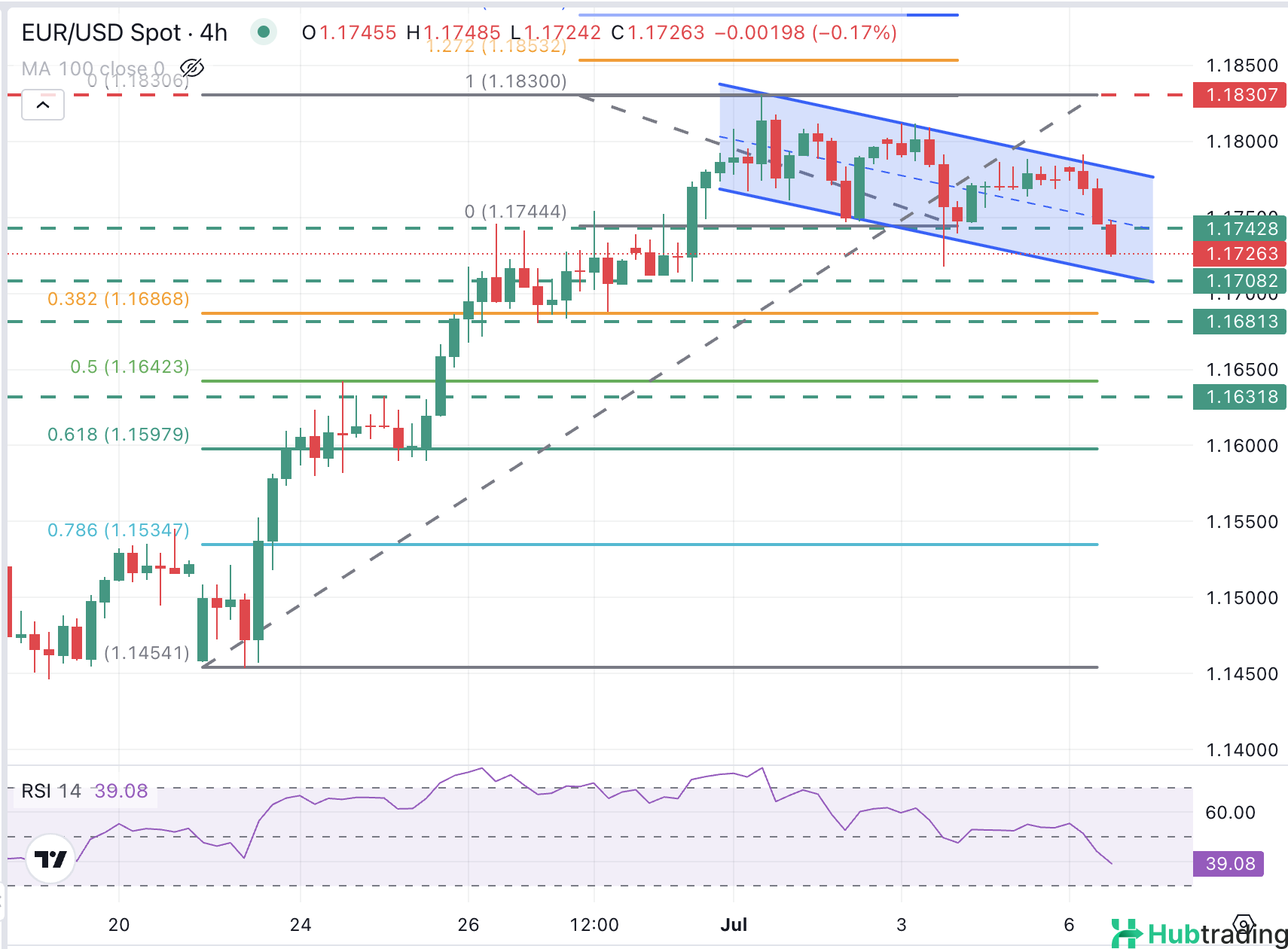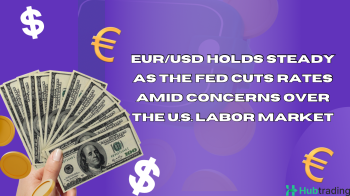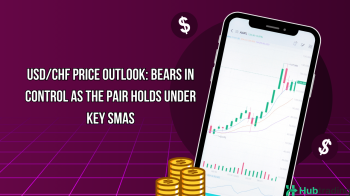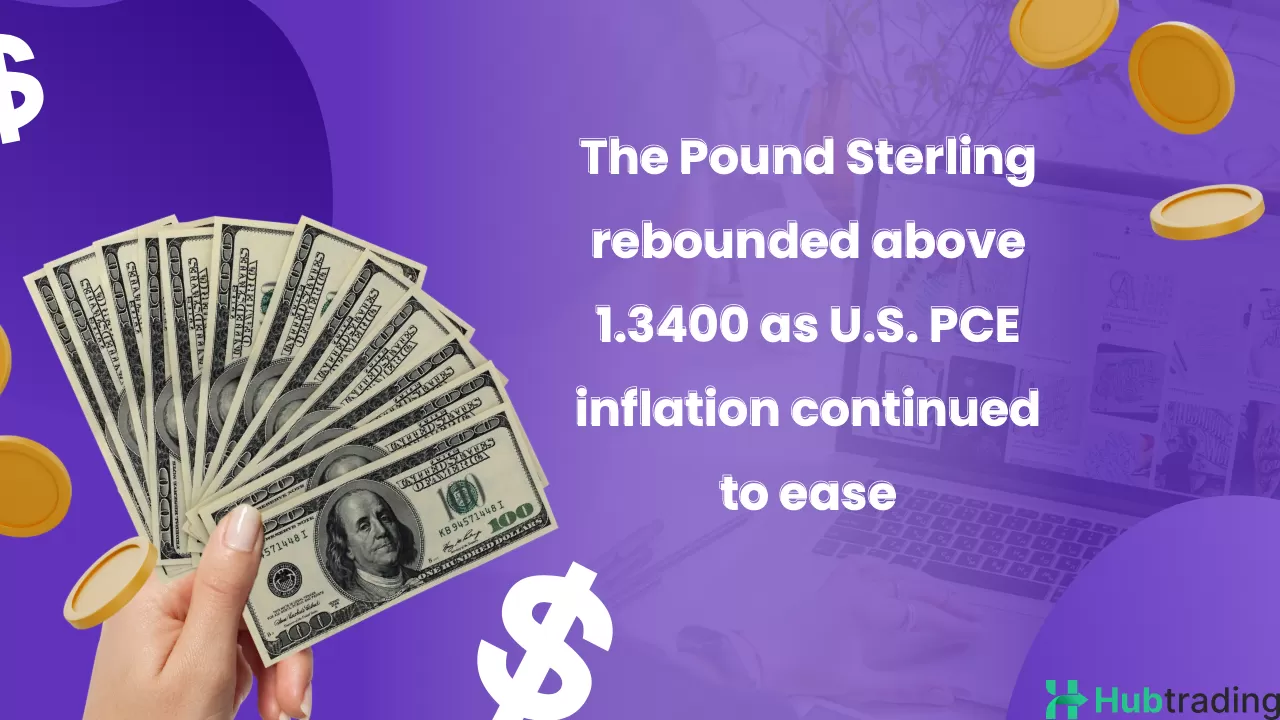-
The Euro deepens its decline as investors brace for upcoming US tariffs.
-
A surprise rise in German Industrial Production fails to lift the Euro.
-
President Trump plans to notify trade partners of specific tariff rates through formal letters.
The EUR/USD pair continues its downward trajectory on Monday, pressured by a strengthening US Dollar and rising US Treasury yields. Mounting concerns over global trade disruptions, with the July 9 tariff deadline approaching, have renewed investor demand for the Greenback as a safe-haven asset.
In early European trading, the Euro slipped back into the lower 1.1700s, trading just below 1.1720 at the time of writing. Correlation analysis points to the potential for further EUR weakness if the US Dollar Index (DXY) maintains momentum below the key 97.00 threshold.
Despite an unexpected rise in German Industrial Production and a mixed Eurozone Retail Sales report, the Euro has failed to find support. Market sentiment remains risk-averse, with investors largely ignoring the data in favor of broader geopolitical developments.
Adding to the uncertainty, US President Donald Trump is set to begin sending letters to trading partners on Monday, outlining the tariff rates to be imposed on their goods. Although the official deadline is Wednesday, Treasury Secretary Scott Bessent has suggested that the tariffs might be delayed until August 1, leaving markets in limbo.
Since Trump’s tariff moratorium announcement nearly three months ago, only three countries—China, the UK, and Vietnam—have reached deals with the US. The China deal, however, focused more on easing prior tariffs than establishing new trade terms.
Meanwhile, the US administration continues to signal optimism about additional agreements. Sources hint that a mini trade deal with India may be near, while Bessent has also cited ongoing progress in discussions with the European Union.
Daily Market Movers: EUR/USD Drops Further Amid Risk-Off Sentiment and Tariff Jitters
- The Euro continues to extend its losses on Monday, trading at the lowest levels of last week’s range as risk-off sentiment dominates global markets. Investors remain cautious ahead of more clarity on US tariff measures—specifically the scope, deadline, and affected countries—which has supported the US Dollar and dampened risk appetite.
- US Treasury Secretary Scott Bessent confirmed over the weekend that countries failing to secure trade agreements with the United States will face tariffs announced last Friday. President Donald Trump added further tension by hinting at an additional 10% levy on countries aligning themselves with the BRICS bloc. Still, Bessent also noted that the US expects to unveil several major trade deals in the coming days.
- In the Eurozone, the latest data provided mixed signals. Retail Sales for May fell by 0.7% month-on-month as expected, but April’s figure was revised upward to 0.3% growth from the previous 0.1%. On an annual basis, retail consumption rose by 1.8%, outperforming the 1.2% market forecast.
- Separately, Germany’s Industrial Production surprised to the upside, rising by 1.2% in May following a 1.6% decline in April. This beat market expectations for flat growth, yet the data failed to significantly lift the Euro amid prevailing risk aversion.
- Across the Atlantic, last week’s stronger-than-expected US labor market data bolstered the Dollar. June private payrolls rose by 147,000—well above the projected 110,000—while the unemployment rate fell to 4.1%, countering expectations for an increase. These figures have sharply reduced the likelihood of a Federal Reserve rate cut in July, with the CME Group’s Fed Watch Tool now showing less than a 5% probability of a 25-basis-point cut this month, down from 20% prior to the release. Expectations for a September cut have also dropped to under 70% from nearly 95%.
EUR/USD Technical Outlook: Pressure Mounts as 1.1710 Support Nears

EUR/USD continues its bearish correction from last week's peak at 1.1830, with technical indicators pointing to further downside. The 4-hour Relative Strength Index (RSI) has fallen deeper into bearish territory below the 50 mark, and price action has slipped beneath the July 2 low at 1.1740.
The pair is now approaching key support around 1.1710–1.1715, near both the bottom of the current descending channel and the June 30 low. A decisive break below this level could open the door to deeper losses toward the 1.1680–1.1685 region—coinciding with the 38.2% Fibonacci retracement of the June 27 to July 1 rally.
To reverse the bearish trend, EUR/USD would need to reclaim the top of the descending channel at 1.1785 and surpass the intra-day high at 1.1790. Above that, the next key resistance lies in the 1.1815–1.1825 zone, which capped bullish attempts on July 1, 2, and 3.
In the near term, the pair remains under pressure unless macro conditions or technical breakouts shift momentum in favor of the Euro.





